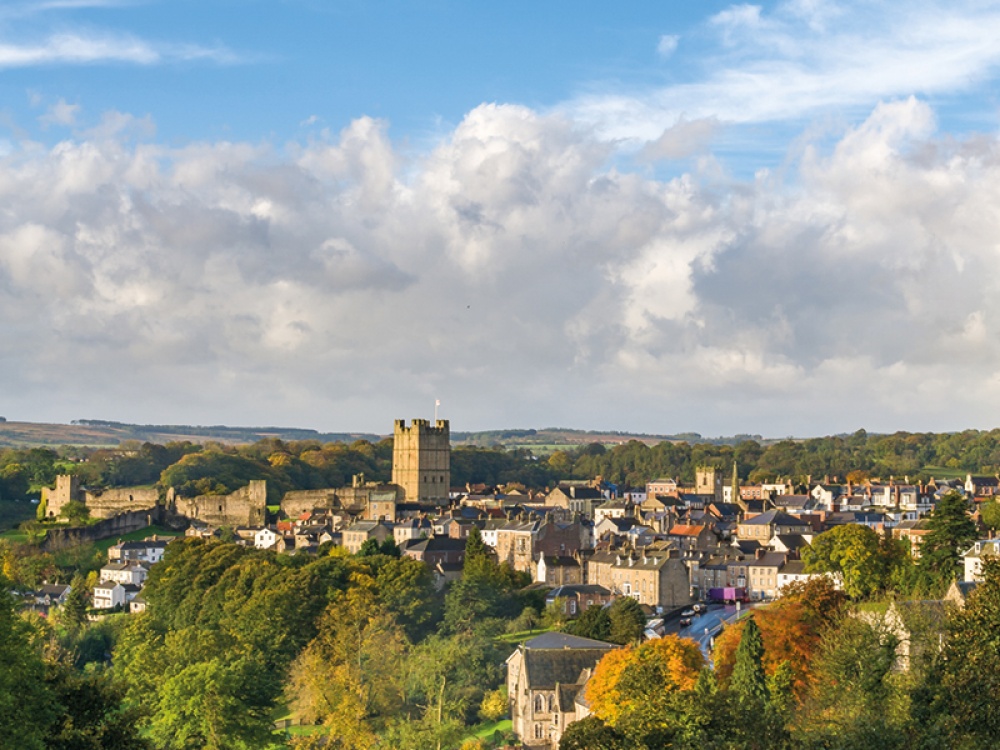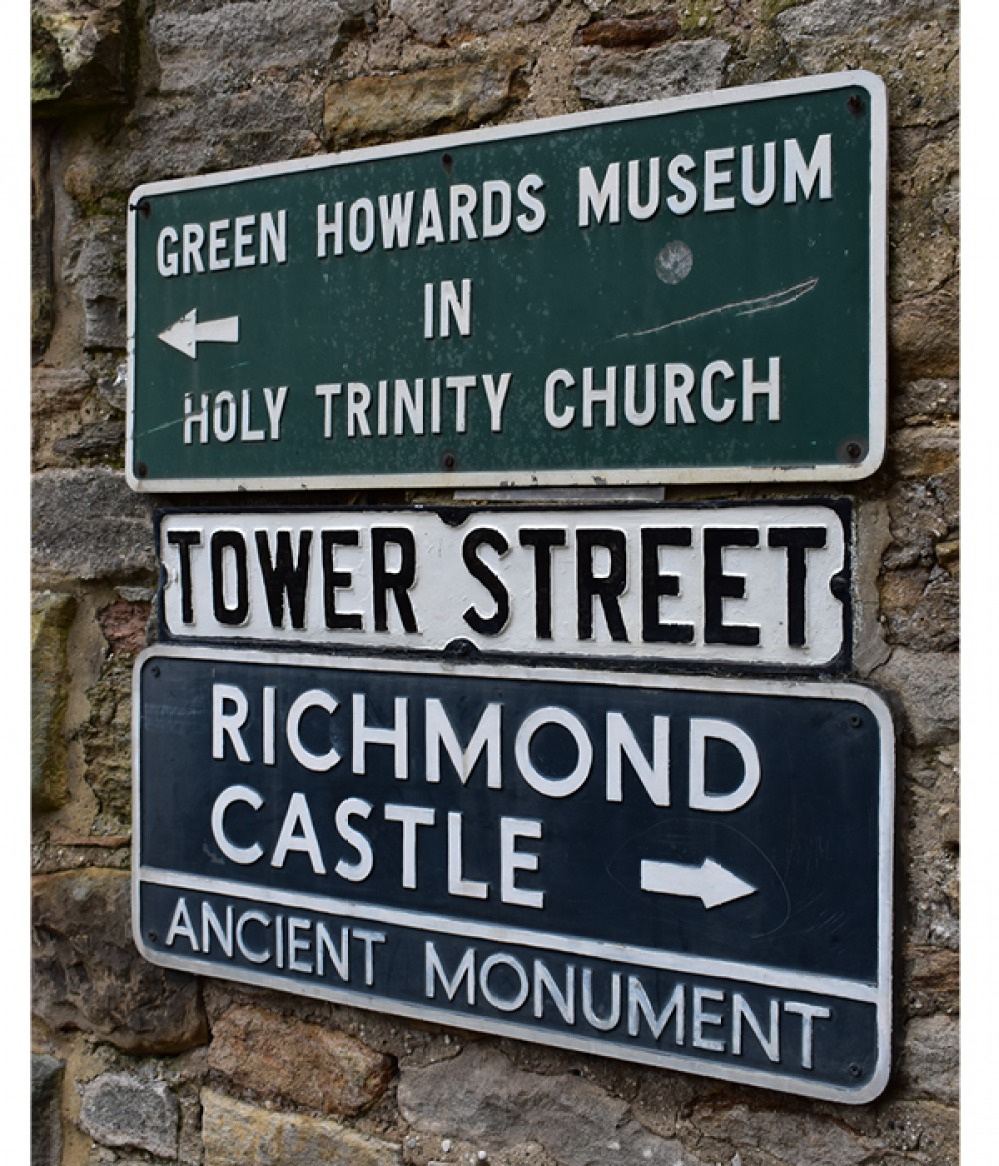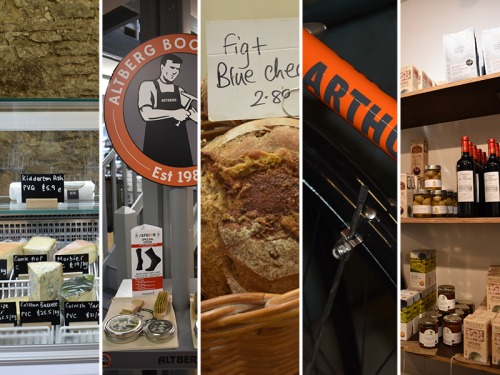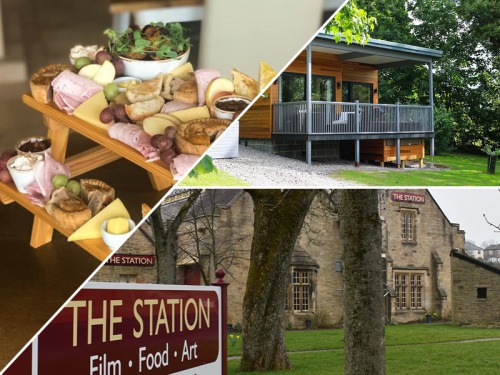
Why You Should Visit Richmond this Summer

Picture-perfect Richmond’s cobbled streets are crammed with history (unsurprisingly, as it dates back to 1071)
Much of Richmond’s fascinating history centres around its castle. The building of the Norman castle began in the 1070s on land gifted to Alan Rufus (Alan the Red), 1st Lord of Richmond, who had fought at the Battle of Hastings alongside William the Conqueror. Some of the castle’s famous prisoners include King William the Lion of Scotland, taken at Alnwick in 1174, and David II after his defeat at Neville’s Cross in 1346. Charles I apparently stayed here on his journey south in 1647, after he had surrendered to the Scots. In 2019 a new permanent exhibition opened at Richmond Castle, which tells of its long and fascinating history.
The earliest surviving buildings at Richmond are thought to have been erected by Alan Rufus in the 1080s, including long stretches of the stone curtain wall and the great archway in the ground floor of the keep.
Richmond was formed around its castle, and became an important regional centre in the medieval period when royal charters were granted giving Richmond rights to hold markets and fairs – important parts of Richmond’s heritage which are still celebrated today. There’s a traditional market in the square here each Saturday, and one indoors every day in the 19th-century market hall. The wool industry in Swaledale and the lead mining industry in Arkengarthdale had a real impact on Richmond in the 17th and 18th centuries, and much of the town’s picturesque Georgian architecture dates back to this period. One of Europe’s first gas works was built in the town in 1830, and Richmond was one of the first provincial towns in Europe to be lit by gas.

'Richmond was formed around its castle, and became an important regional centre in the medieval period when royal charters were granted giving Richmond rights to hold markets and fairs – important parts of Richmond’s heritage which are still celebrated today'
For years, families came to Richmond to attend the horse racing which took place at Richmond Racecourse, but races were last hosted in 1891 after which the turns were deemed too tight for modern thoroughbred horses. The grandstand building, dating back to 1775, remains the oldest stone-built public grandstand in the world. Horses are still trained on the gallops here, and it’s a great place for walking as the site is criss-crossed by public footpaths.
Although the town’s historic buildings have changed their roles over the years, they’ve maintained much of their original character. A great example of that is Richmond Railway Station across the river. It opened in 1846 and closed in the 1960s. Following a brilliant renovation, it opened again in 2007, was renamed The Station, and has been a popular cultural and commercial hub since.
The museums here tell much of this town’s tale. During the First World War, The Green Howards (known as the Yorkshire Regiment until the 1920s) raised 24 battalions for the war effort, and Richmond Castle became a barracks and training camp for new recruits. Today, The Green Howards Museum traces this famous regiment’s history. In 2019, the Medal Room in this museum was redeveloped to create a new gallery for their Victoria and George Cross collection. Don’t miss the Touch Tours from May onwards, where you can get closer to the historic collection as artefacts are brought forward from behind the glass.
Richmondshire Museum is a hidden gem where you can discover plenty more of the town’s history, from the Romans to the railways, discovering the impact of lead mining and visiting a replica of the first ever Fenwick shop, which was in Richmond.
There’s a hint of history around every corner and in each nook and cranny, you just have to visit and simply take a look around…
• The word Richmond comes from the Norman French ‘richemonte’ meaning ‘strong hill’.
• Only two other stone-built castles are equal in age to Richmond’s; Colchester and Durham.
• Within the walls of Richmond Castle, a 19th-century military cell block has thousands of pieces of graffiti that span several decades and two world wars.
• Henry Greathead, the inventor of the lifeboat, was born here, as was Fenwick founder, John James Fenwick.
• The Georgian Theatre Royal, built in 1788, is Britain’s oldest working theatre in its original form.
• In the Victorian era, the castle became the headquarters of the North York Militia.
• Henry VII named London’s Richmond after his favourite Earldom, Richmond in Yorkshire.
• Alan Rufus is acknowledged as having been the richest man in Britain, with his wealth in today’s currency valued at more than £81 billion.
• In June 1927, Richmond was a centre line of totality during a solar eclipse. This is celebrated on a plaque at the top of Reeth Road.
• Richmond was named UK town of the year in 2009.
• The Market Place is said to be one of the largest cobbled markets in England.






